Whitehall Museum, a 500 year old Grade II* Listed Tudor building, is located in the leafy suburb of Cheam and has Royal connections when going back through its history. The main timber structure, Tudor in architectural style, was built c.1482 – 1520 when Henry VIII came to the throne. Links to the lesser known Nonsuch Palace, which belonged to the King, also exist.
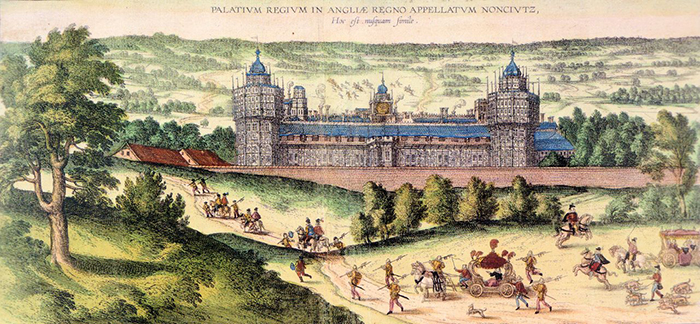 King Henry VIII’s Nonsuch Palace, which stands no longer – image Wikipedia
Its original function is unknown, although thought to have been constructed for a yeoman farmer. At some point, it was referred to as 'The Council House' owing to its use by Queen Elizabeth I for holding an impromptu council meeting for signing papers whilst on a hunting expedition from Nonsuch Palace.
Over the years, the quaint white weather boarded building was extended and altered, with influences from the Georgian, Victorian and Edwardian eras seen today. As a result, it is Grade II* Listed as a rare survivor of domestic architecture of its kind.
After years of neglect following its change of hands and ownership, Cheam Council acquired the property and set about gaining funding from The Heritage Lottery Fund to restore it to its former glory and open it up to the public as it now stands; ‘Whitehall Museum’.
King Henry VIII’s Nonsuch Palace, which stands no longer – image Wikipedia
Its original function is unknown, although thought to have been constructed for a yeoman farmer. At some point, it was referred to as 'The Council House' owing to its use by Queen Elizabeth I for holding an impromptu council meeting for signing papers whilst on a hunting expedition from Nonsuch Palace.
Over the years, the quaint white weather boarded building was extended and altered, with influences from the Georgian, Victorian and Edwardian eras seen today. As a result, it is Grade II* Listed as a rare survivor of domestic architecture of its kind.
After years of neglect following its change of hands and ownership, Cheam Council acquired the property and set about gaining funding from The Heritage Lottery Fund to restore it to its former glory and open it up to the public as it now stands; ‘Whitehall Museum’.
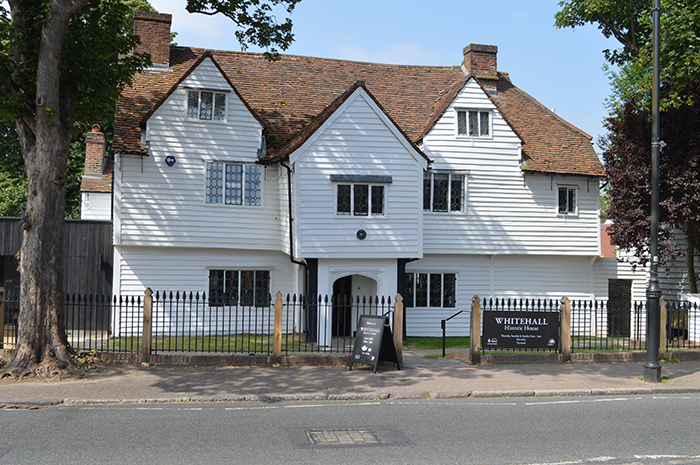 The quirky Grade II* Listed Whitehall Museum, Cheam
The sustainability of the building was of great importance to reduce on-going costs as well as meeting 21st century standards and regulations. Secondary glazing was approved as the solution and Selectaglaze set about designing a suitable treatment addressing energy performance upgrades and fire integrity to designated primary windows.
15 units were installed from the lightweight heritage range and two fire-retardant units. Due to the age and materials used to construct the building, the floors sloped, the walls and ceilings bowed and the window openings were very irregular. Tapered and splayed timber grounds were used to take up the irregularities of the window reveals which were scribed on site. Once these were in place the secondary glazing was installed which was sympathetically designed to suit the original windows.
The quirky Grade II* Listed Whitehall Museum, Cheam
The sustainability of the building was of great importance to reduce on-going costs as well as meeting 21st century standards and regulations. Secondary glazing was approved as the solution and Selectaglaze set about designing a suitable treatment addressing energy performance upgrades and fire integrity to designated primary windows.
15 units were installed from the lightweight heritage range and two fire-retardant units. Due to the age and materials used to construct the building, the floors sloped, the walls and ceilings bowed and the window openings were very irregular. Tapered and splayed timber grounds were used to take up the irregularities of the window reveals which were scribed on site. Once these were in place the secondary glazing was installed which was sympathetically designed to suit the original windows.
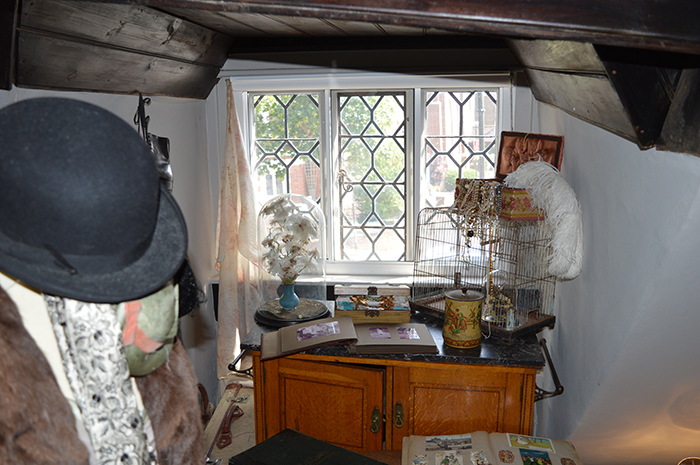 Series 10 3-pane horizontal sliders raising the thermal performance of Listed leaded light primary glazing
The treatment of the fire rated windows posed another challenge. Back in Tudor times, there were no fire regulations and local oak and elm, dating from c.1500, was used for the construction of the building. The approach had to be carefully planned and approved by building control with new fire resistant reveals crafted into which the secondary glazing was installed ensuring the integrity of the treatment.
Series 10 3-pane horizontal sliders raising the thermal performance of Listed leaded light primary glazing
The treatment of the fire rated windows posed another challenge. Back in Tudor times, there were no fire regulations and local oak and elm, dating from c.1500, was used for the construction of the building. The approach had to be carefully planned and approved by building control with new fire resistant reveals crafted into which the secondary glazing was installed ensuring the integrity of the treatment.
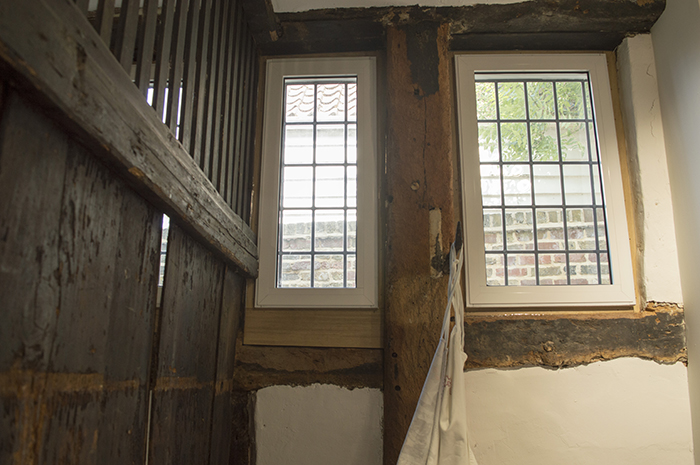 Selectaglaze Series 40, 30-minute fire integrity secondary glazing to the kitchenette area
Whitehall Museum is once again welcoming visitors to step over the threshold of centuries past, for hopefully many more centuries to come, providing an insight as to how people lived in a time gone by.
Selectaglaze Series 40, 30-minute fire integrity secondary glazing to the kitchenette area
Whitehall Museum is once again welcoming visitors to step over the threshold of centuries past, for hopefully many more centuries to come, providing an insight as to how people lived in a time gone by.
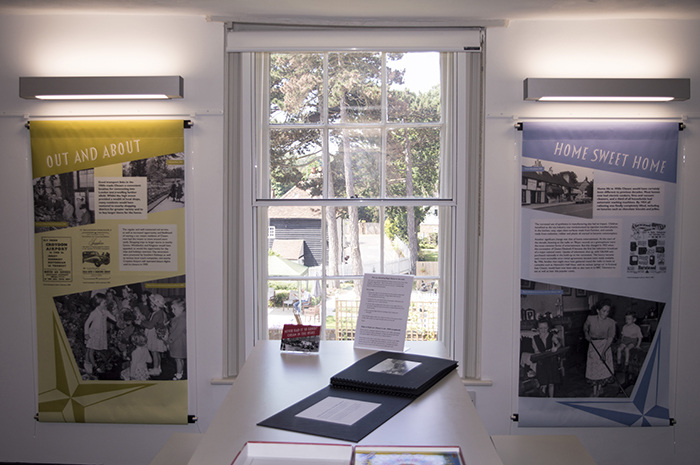
 King Henry VIII’s Nonsuch Palace, which stands no longer – image Wikipedia
Its original function is unknown, although thought to have been constructed for a yeoman farmer. At some point, it was referred to as 'The Council House' owing to its use by Queen Elizabeth I for holding an impromptu council meeting for signing papers whilst on a hunting expedition from Nonsuch Palace.
Over the years, the quaint white weather boarded building was extended and altered, with influences from the Georgian, Victorian and Edwardian eras seen today. As a result, it is Grade II* Listed as a rare survivor of domestic architecture of its kind.
After years of neglect following its change of hands and ownership, Cheam Council acquired the property and set about gaining funding from The Heritage Lottery Fund to restore it to its former glory and open it up to the public as it now stands; ‘Whitehall Museum’.
King Henry VIII’s Nonsuch Palace, which stands no longer – image Wikipedia
Its original function is unknown, although thought to have been constructed for a yeoman farmer. At some point, it was referred to as 'The Council House' owing to its use by Queen Elizabeth I for holding an impromptu council meeting for signing papers whilst on a hunting expedition from Nonsuch Palace.
Over the years, the quaint white weather boarded building was extended and altered, with influences from the Georgian, Victorian and Edwardian eras seen today. As a result, it is Grade II* Listed as a rare survivor of domestic architecture of its kind.
After years of neglect following its change of hands and ownership, Cheam Council acquired the property and set about gaining funding from The Heritage Lottery Fund to restore it to its former glory and open it up to the public as it now stands; ‘Whitehall Museum’.
 The quirky Grade II* Listed Whitehall Museum, Cheam
The sustainability of the building was of great importance to reduce on-going costs as well as meeting 21st century standards and regulations. Secondary glazing was approved as the solution and Selectaglaze set about designing a suitable treatment addressing energy performance upgrades and fire integrity to designated primary windows.
15 units were installed from the lightweight heritage range and two fire-retardant units. Due to the age and materials used to construct the building, the floors sloped, the walls and ceilings bowed and the window openings were very irregular. Tapered and splayed timber grounds were used to take up the irregularities of the window reveals which were scribed on site. Once these were in place the secondary glazing was installed which was sympathetically designed to suit the original windows.
The quirky Grade II* Listed Whitehall Museum, Cheam
The sustainability of the building was of great importance to reduce on-going costs as well as meeting 21st century standards and regulations. Secondary glazing was approved as the solution and Selectaglaze set about designing a suitable treatment addressing energy performance upgrades and fire integrity to designated primary windows.
15 units were installed from the lightweight heritage range and two fire-retardant units. Due to the age and materials used to construct the building, the floors sloped, the walls and ceilings bowed and the window openings were very irregular. Tapered and splayed timber grounds were used to take up the irregularities of the window reveals which were scribed on site. Once these were in place the secondary glazing was installed which was sympathetically designed to suit the original windows.
 Series 10 3-pane horizontal sliders raising the thermal performance of Listed leaded light primary glazing
The treatment of the fire rated windows posed another challenge. Back in Tudor times, there were no fire regulations and local oak and elm, dating from c.1500, was used for the construction of the building. The approach had to be carefully planned and approved by building control with new fire resistant reveals crafted into which the secondary glazing was installed ensuring the integrity of the treatment.
Series 10 3-pane horizontal sliders raising the thermal performance of Listed leaded light primary glazing
The treatment of the fire rated windows posed another challenge. Back in Tudor times, there were no fire regulations and local oak and elm, dating from c.1500, was used for the construction of the building. The approach had to be carefully planned and approved by building control with new fire resistant reveals crafted into which the secondary glazing was installed ensuring the integrity of the treatment.
 Selectaglaze Series 40, 30-minute fire integrity secondary glazing to the kitchenette area
Whitehall Museum is once again welcoming visitors to step over the threshold of centuries past, for hopefully many more centuries to come, providing an insight as to how people lived in a time gone by.
Selectaglaze Series 40, 30-minute fire integrity secondary glazing to the kitchenette area
Whitehall Museum is once again welcoming visitors to step over the threshold of centuries past, for hopefully many more centuries to come, providing an insight as to how people lived in a time gone by.

- Date
- Category
- Project Profile